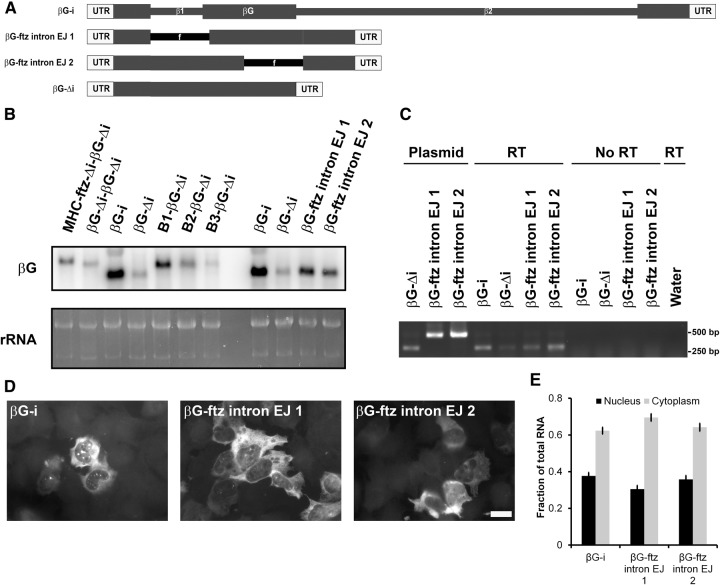Figure 5.
Splicing is sufficient to overcome the nuclear retention element present in βG-Δi mRNA. (A) A schematic representation of the intron containing constructs used in this figure. (B–E) Plasmids containing the indicated constructs were transfected into human U2OS cells. After 14–18 h, RNA was isolated (B,C) or cells were fixed, permeabilized, and stained for mRNA using a FISH probe directed against βG (D,E). (B) Northern blot using βG-specific probes. Total RNA (mostly comprising of rRNA) was stained with ethidium bromide as a loading control. (C) Splicing efficiency of the different reporters was assessed by RT–PCR using RNA isolated from transfected cells and primers that anneal to the first and third exons of βG-Δi mRNA (see “RT” reactions). To determine the size of putative unspliced RNAs, PCR reactions were performed on purified plasmid DNA (see “Plasmid”). To control for the amplification of transfected plasmid DNA, amplification of isolated cellular RNA was performed without a reverse transcription step (“No RT”). (D) Representative example of imaged cells. Scale bar = 20 µm. (E) mRNA distribution was quantified with each bar representing the average and standard error of three independent experiments, and each experiment consisting of at least 30 cells.

